In my previous post Understanding Energy I explained the reasons that designers include energy systems in their games:
- Habituation
- Content Pacing
- Monetisation
- Strategic Choices
I also noted that energy systems aren’t particularly elegant systems – they rarely blend well with the setting of the game, and this disconnect makes them disliked by players. Removing or eliminating energy systems from mobile games is no easy task. There are some directions that bear consideration and further investigation though.
Pacing through quests
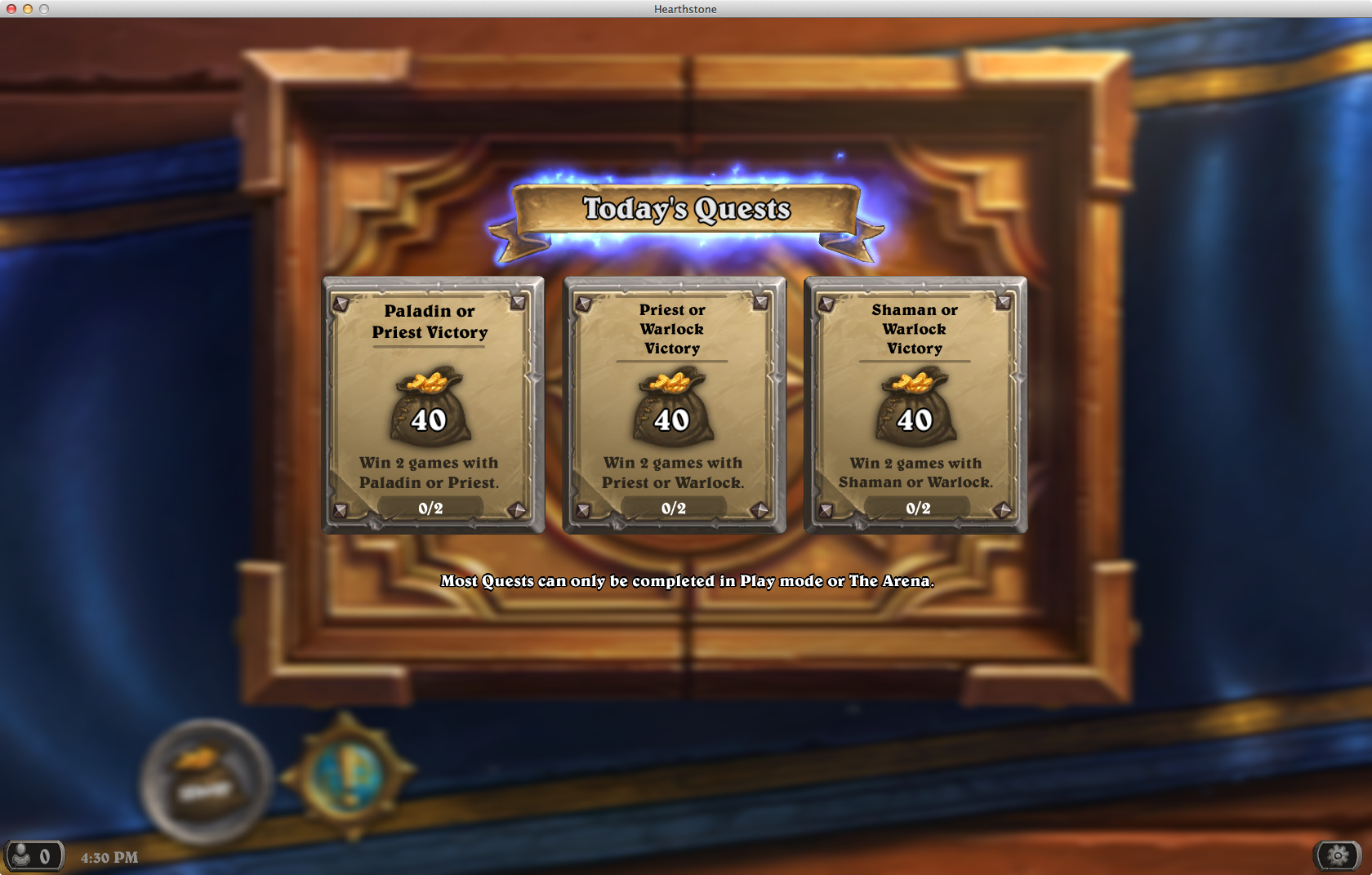
Energy systems pace players by limiting the amount that they can play. This clearly prevents players progressing too fast through a game’s content. However, it is possible to limit the rate of progression directly, whilst leaving play unlimited. The way to do this is to decouple the main source of rewards in the game from play, so that rewards can be limited independently of play time.
The best case of this is Hearthstone. Here the quest system is the main pacing mechanic, as it is the main way that players can earn in-game currency. Players get one new quest each day and each quest requires perhaps three to ten matches to complete. Once the player has exhausted their missions, they can continue playing for rank or pleasure, but their ability to earn coins is negligible and so the game economy is protected.
For most mobile games this route is likely to be the easiest and most satisfactory route to removing energy and timers.
Session length and synchronous PvP
Another way of pacing players is to increase the amount of play time required to progress. The pace that players can progress is then limited by the number of hours they can sink into the game. The big caveat to this is that it is much easier to do this on console / PC than on mobiles.
Mobile games are designed to fill the gaps in people’s days – when they are waiting for the bus, queuing for their coffee or avoiding work on the toilet. A mobile game needs to have a satisfying session possible in 1-3 minutes to fill these gaps. For a mobile game it is very difficult to give players a satisfying session in just a few minutes without bombarding them with rewards if they decide to play for a few hours – perhaps 50-60 sessions all in one go.
PC and console games have it easier as they are designed to be played in stretches of 2-3 hours at a time. A Hearthstone match lasts 5-15 minutes, whilst a League of Legends match lasts 30-45 minutes, so a few hours play is a handful of matches. This means that the base rate of progress can be extremely slow. These games get away with such slow progression because they rely heavily on synchronous PvP battles. The excitement of facing off against other people in real time compensates for slow progression in the meta game.

Mobile games typically have problems with synchronous PvP because people want to pick up and drop mobile games at any time, and there is little commitment to stick with match, which combined makes for a poor user experience. That said, World of Tanks Blitz has managed to be successful in spite of these challenges. Although the battles are typically only 4-6 minutes, the game still manages pace progression slow enough to avoid an energy system.
The problem that World of Tanks Blitz has is that whilst it covers off content pacing just fine, it monetizes very poorly compared to most other successful mobile games. Indeed seems unlikely World of Tanks Blitz would be successful without a PC product to support its brand awareness. 8 Ball Pool has also managed to be successful here with even shorter play sessions, but faces the same issue with revenue. Being the dominant digital version of a hugely popular real world game seems to be a major factor in 8 Ball Pool’s success.
Limited progression and asynchronous PvP
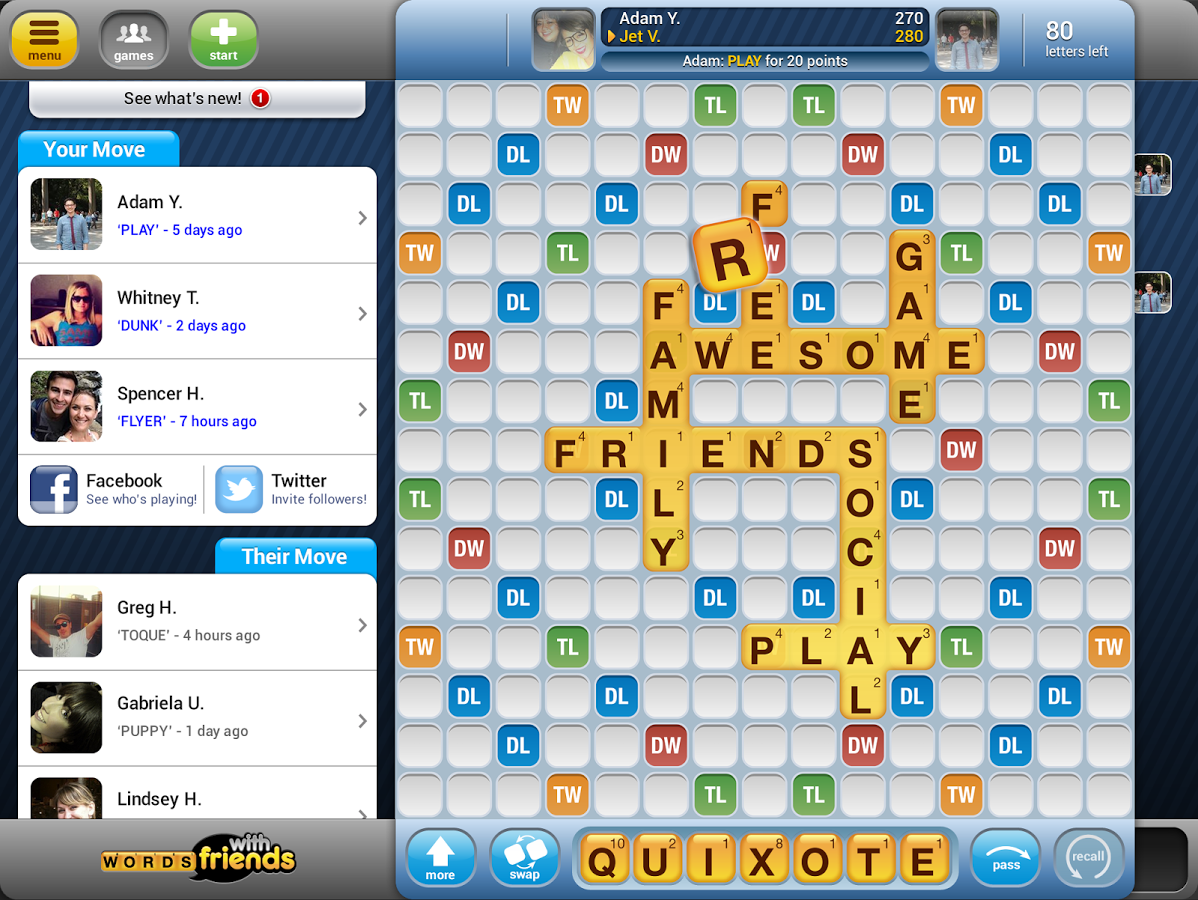
Another small set of mobile games have managed to be successful without energy systems by limiting the amount of progression available to players. Games such as Words with Friends and Draw Something offer players an asynchronous PvP experience that is incredibly viral, and where the costs of creating content are minimal.
As content is generated by other players, there is no need to limit play time. However, in order to keep the playing field fair and prevent the games becoming play to win, these games have very little to offer in terms of progression and hence to sell to players. Both Draw Something and Words with Friends rely heavily on in-game advertising to generate revenue as they have so little to sell themselves to players.
Framing
If eliminating energy altogether is not possible then framing it correctly to players can greatly improve the player experience. World of Warcraft experimented with their pacing system, primarily to habituate players into certain play patterns. Their initial mechanism halved the XP that players could earn after a certain point, encouraging them to end their session.
Players universally hated it. Blizzard responded by reframing the system, turning “normal” XP into “bonus” XP that still halved at exactly the same point, but now instead of dropping down to a penalized level, it just dropped something they called “normal” XP. Suddenly players loved the system; although the numbers were exactly the same players felt rewarded instead of punished.
In the same way, timers usually feel better than energy points. If it takes me a certain amount of time to build a building, travel somewhere or train troops then that fits with the narrative of the game and feels better than it costing energy, which appears to be (and is) an arbitrary cap on the amount I can play.
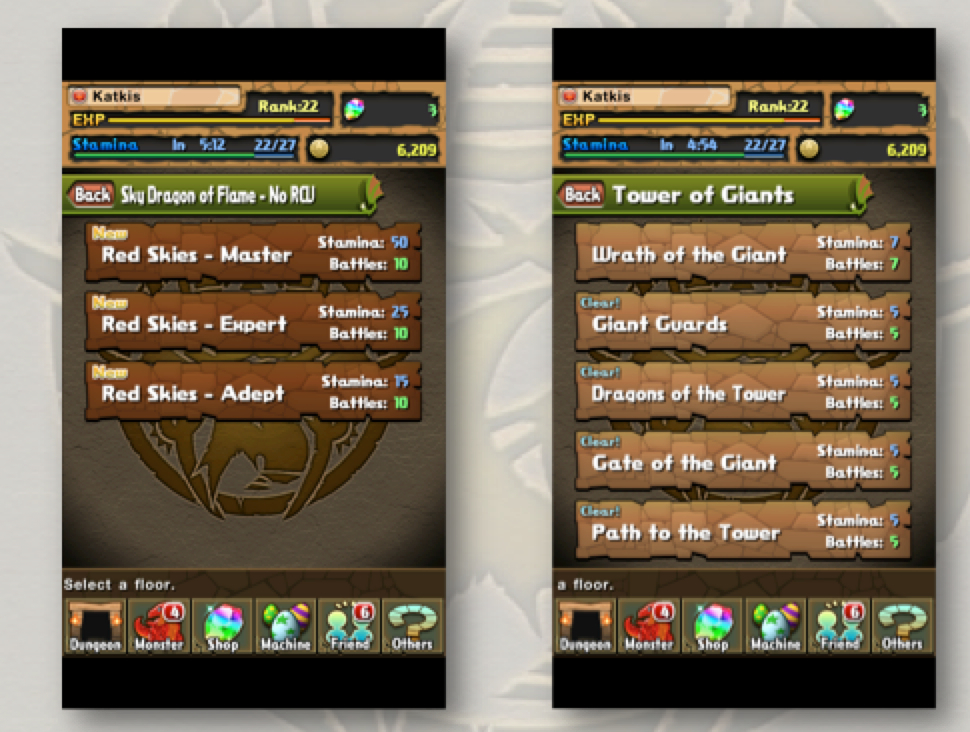
Another way to make energy feel better to players is to give players some control over it. Basically, make a game out of spending energy. In Brave Frontier and Puzzle & Dragons the amount of energy that each levels costs differs. Players have to figure out how best to spend their energy, and not leave a small amount left over and wasted.
In Boom Beach players only need to train troops if their troops die in combat. Players can therefore attack lots of different opponents in the same session, as long as they pick them carefully. The game is obviously balanced to players playing in this way, but they feel a lot smarter because of the control they have over the timers presented to them.
Conclusion TL;DR
Eliminating energy is not an easy design challenge for mobile games. Pacing player rewards is one obvious route that more games should investigate. Some games may be able to rely on PvP play and user generated content to limit the rate of progression, though monetizing these games is generally a challenge. For many games the best they will be able to do is to frame their energy systems in ways that make them more palatable to players.
Energy seems to be hated by designers and players alike, so why does it endure as the hallmark of casual F2P games? The fact is that whilst it’s a crude mechanic, it’s also an efficient one, delivering several functions in one easily implementable feature.
This isn’t a defence of energy systems – I’ll follow up with a post on ways of replacing them – but without something fulfilling these roles then it’s unlikely you’ll make a very good game. I’ll talk about energy and timers fairly interchangeably here as they are both pacing systems that function remarkably similarly.
The four main reasons that mobile designers use energy systems are:
- Habituation
- Content pacing
- Monetization
- Strategic choices
Habituation
The primary reason that designers use energy systems is to encourage players to play as long and as frequently as they would like. The amount of energy gives an easy way to fix the length of the play session, whilst the energy refill rate determines the play frequency. Energy systems do this by providing the player with closure – the feeling that they have done everything they need to in a game, and that when they return there will be new, fun stuff to do.
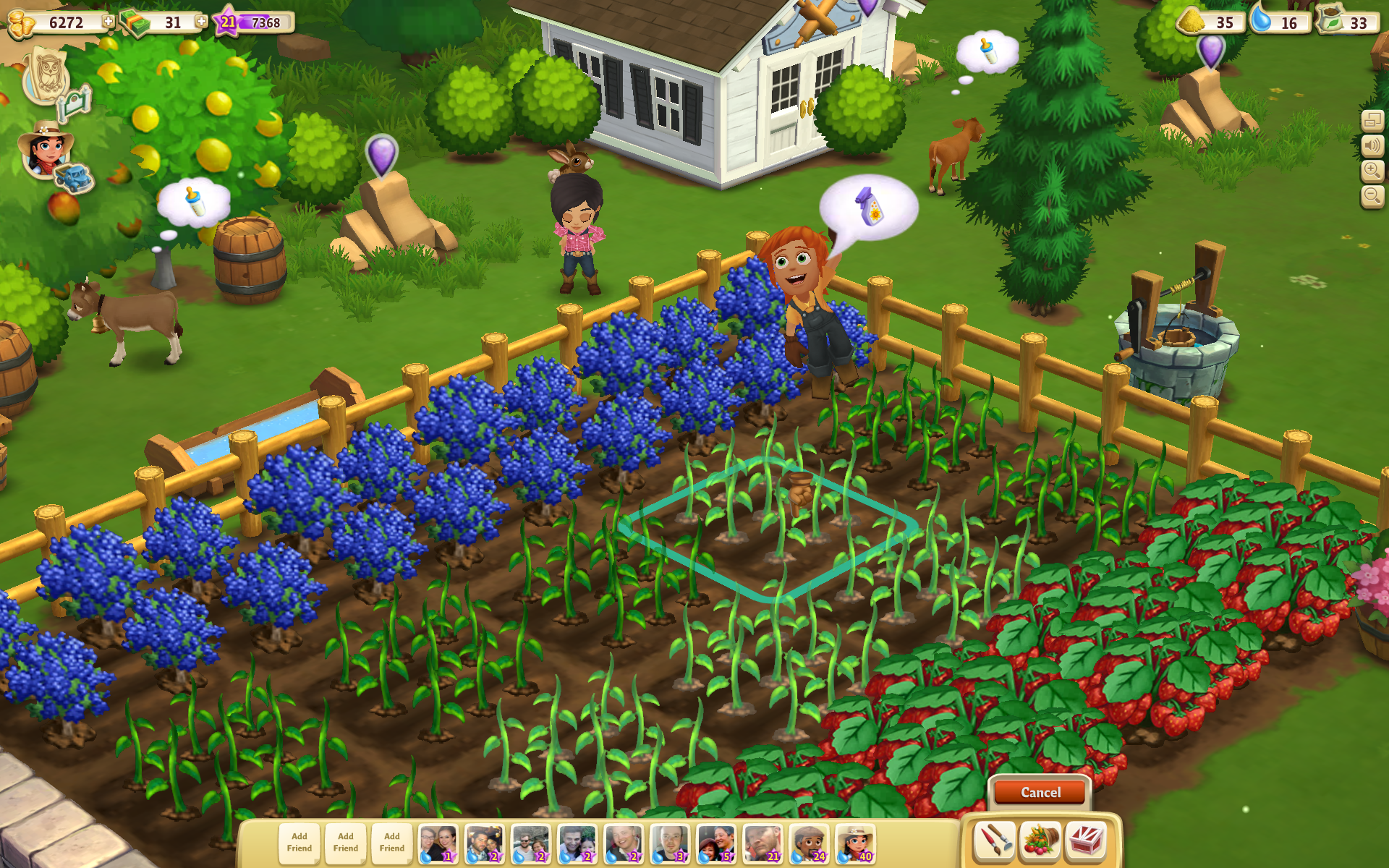
This is why crop and resource production timers work so well. Players coming back to the game harvest all the crops that have grown whilst they are away – a hugely positive experience. Then they can use the crops to complete deals, craft things and improve their farm. Finally they plant their crops so ready for their next session. As they leave the game there is nothing more for them to do in their farm, so it feels like a natural point to stop playing; but they also know that when they return they can get the satisfaction of harvesting their crops again.
Designers need to be able to control session length and frequency because it allows them to integrate their game into their players’ daily routine. Any activity that becomes part of your daily routine is likely to be something that you keep doing a lot longer than you otherwise might, and long term retention is highly correlated to lifetime value.
Think of the game as chocolate. If you had unlimited chocolate (and limited willpower) you might binge on it to the point you were sick of it. At this point you wouldn’t want to eat chocolate again for a while. Imagine if you got a small piece of chocolate every afternoon with your coffee break though. Now the chocolate enhances your coffee break, but at the same time, you never have enough in one go to get sick of it. Instead you look forward to the chocolate enhanced coffee break, and would miss it if it was taken away from you. As with chocolate, so goes gaming.
Content pacing
The second main reason that designers use energy systems is to pace their content, and to ensure that players consume content at roughly the same rate. Once players have run out of new content to experience, they usually have little interest in a game. It is vital therefore, to ensure that players are not consuming content faster than you can produce it.
Energy systems are crucial to minimising inequality in game economies; they ensure that players all consume content at roughly the same rate
PvP games often have an advantage here because their players effectively produce content for each other to consume. In Clash of Clans, each player’s layout of their base is unique and interesting for other players to attack. But Clash of Clans still needs to bring out new units, upgrade levels and features on a regular basis to keep their most engaged players.
Energy systems also help to reduce the “distribution of wealth” in games that exists between highly engaged and less engaged users. By capping the rate that the most engaged players can play, they cannot get too far ahead of the less engaged players. This is important for balancing, as a game should remain interesting for both types of players, and setting a progression rate that is interesting for the slowest players and yet doesn’t allow the fastest players to run out of content can otherwise be a challenge.
Monetization
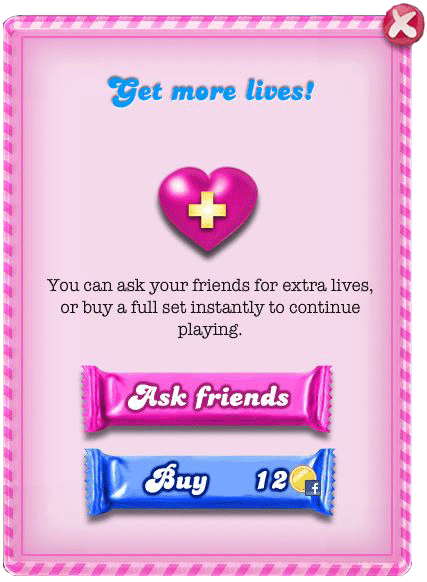
Making money is the third reason that designers use energy systems. In casual games energy might typically represent a third of bookings. This is not insignificant, but there are better ways to make money out of games, and monetization alone is a poor reason to go with an energy system. Energy doesn’t typically make for a very exciting or satisfying purchase, as it gives players something that they could get if they waited a bit longer. Most mobile designers realise this and despite the perception of energy systems as a cynical way to extort players, it is rare to see them if they are not needed for habituation and content pacing as well.
Strategic choices
In some games energy systems also provide the player with a strategic choice that they need to make. This comes from having a limited number of energy points to spend each session, and a greater number of possible actions. Players must decide what to spend their energy on, and because of this they usually need to set themselves a longer term goal that they are working towards over several sessions.
For example, in Clash of Clans, because I can only upgrade 2 or 3 buildings at a time, and each one might take anywhere from a few minutes to a few days, I need to work out what I prioritise. Do I upgrade my resource generating buildings first to facilitate further upgrades, my storage space allowing me to raid more, or my defensive buildings to protect what I’ve got? In prioritising my current session, I also create a mid term plan for my future sessions as well, which builds off this. In games where the energy system doesn’t allow the player any real choice in what they do, the system typically feels even more arbitrary and restrictive.
Conclusion
The reason that F2P designers use energy systems is not because they hate players, it’s because energy systems are efficient mechanics to encourage specific play patterns, pace content, monetize a game and provide a player with strategic choices. Designers should be wary of releasing any game without features that cover all these bases one way or another.
Blizzard’s Hearthstone has defined collectable card games (CCGs) on mobile over the past year, and with the recent launch of the versions for smart phones on both iOS and Android the mobile revenues have rocketed roughly sevenfold.
Hearthstone is an interesting game to look at, because it breaks so many of the conventions of mobile F2P:
- It has no energy system
- It sells only permanent items
- It is highly skill based
- It is mainly synchronous PvP
As such it appeals to a lot of self designated “gamers” that find other mobile games somehow below them. This run down of the game will take apart the main features and discuss how they create and great game, and whether there are larger implications for the mobile F2P industry.
Core Loop
The core loop in Hearthstone is incredibly simple:
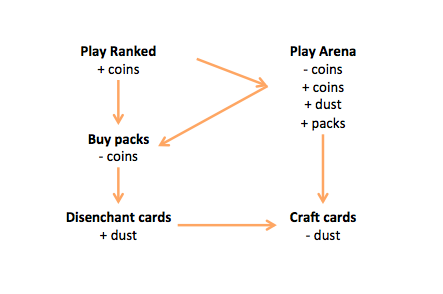
There are two main play modes: Ranked and Arena.
Ranked can be considered the basic game mode, where players play against each other synchronously to climb a monthly ladder. Players use decks that they have constructed from their permanent card collections. It is free to play, and players earn coins for winning matches and completing quests that appear daily.
Arena can be considered a secondary play mode, but is hugely important to and complements Ranked play. Here players also play synchronously with each other, but they must pay an entry fee – either coins or real money. Players make a deck as they enter the arena, choosing one of three cards at a time until they have a full deck. The rewards depend on a player’s performance, but can be generous compared to the entry cost.
The balance of the two modes is important, because it provides both payers and non payers, as well as players of different skills something to do. Earlier on, players may find Ranked play easier as they learn to put together decks that rely on specific combos. Later on they may find Arena more fun as there is the challenge of putting together a deck on the fly, and all players have the same chance of getting legendary cards.
Pacing

Quests act as the pacing system in Hearthstone, but it is so well framed that many players don’t see it for is. Rather than restricting the number of matches that players can play in a certain time, quests limit the amount of coins that a player can earn. Players get one new quest each day, and are limited to having three in total at any one time. Players can earn small amounts of coins for winning matches in Ranked play (10 coins every 3 wins), but this is small both compared to the time it would take to play these matches (perhaps 30 minutes or more on average), as well as the coins earned from quests (40-100 per quest).
As players earn most of their coins from quests, and not from playing matches, Hearthstone has no need to limit the amount of times a player can play. Players can (and do) sink hours into climbing the rankings without breaking the economy, as after the first few games their in game earnings are virtually nil. This is such a simple yet effective feature I am amazed that more F2P games have not copied it – energy systems are by far the most hated, yet standard F2P systems.
Single currency, single resource
I count coins as the single currency in Hearthstone and dust as the single resource. Hearthstone does not have a soft currency for everyone and a hard currency for payers. It follows therefore that it does not have items that can only be bought for hard currency. Purchasable things in the game can either be bought for either coins or real money. Dust is reserved exclusively for crafting specific cards.
The fact that as a non payer you can get anything in the game, and you can earn coins at a reasonable rate, helps create an environment that seems fair and inviting for both payers and non payers alike. Whilst the temptation to drop real money on a bunch of packs is constant, it never feels like someone has beaten you just because they’ve spent money on the game.
Permanent purchases
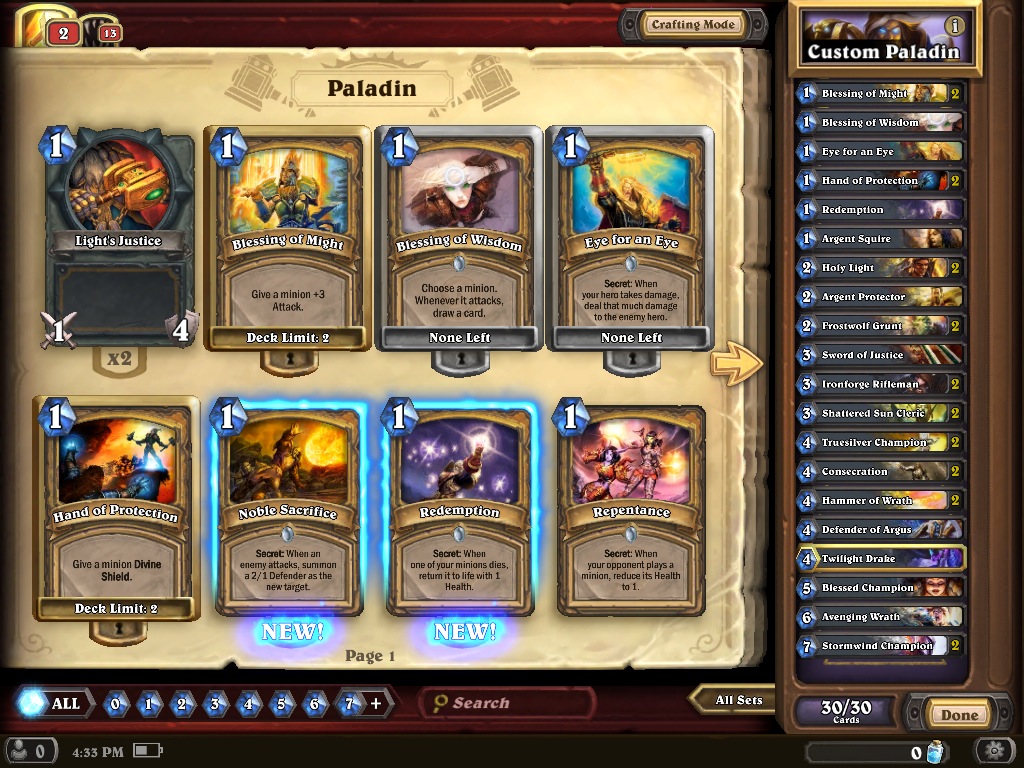
The nature of card rarity in Hearthstone also supports the feeling of fairness. Cards have one of four rarities: common, rare, epic and legendary. However, in contrast to many of the other mobile CCGs, cards cannot be upgraded or fused. This means that buying cards always results in a permanent addition to your collection, either directly or through the crafting system.
As with all CCGs there needs to be some method of dealing with duplicate cards, to maintain the randomness of pack opening. Hearthstone only allows players to have two of each card (one of legendaries) in their deck. Duplicates beyond this can be disenchanted for Hearthstone’s main resource: dust, which in turn can be used to craft any card in Hearthstone. The conversion rate is obviously not great – cards give only 25% of their cost to craft when they are disenchanted, and making progressively rarer cards gets ever more expensive. You need to disenchant 320 common cards to craft a single legendary. But the system does mean that even if players only get duplicates through randomly opening packs they can work towards specific cards that they want to create particular decks.
The fact that purchases result in permanent items that cannot be taken away from the player makes them all the more attractive. Players know that if they get a legendary card they will always have it, and its power will stay constant. Players can still spend huge amounts of money on the game, as there are so many cards to collect and the chance of getting a legendary is so low. Various Reddit posts put the cost of a Legendary at around $12-24, so with 67 legendary cards currently players could easily spend over $1,000 getting all of those alone. The cost of the epics and rare cards would be on top of that, and players can pay 4x for cards with a gold back – a purely cosmetic change.
Buying Experience
[youtube https://www.youtube.com/watch?v=_N0p4YSXn4Q]
The permanence of purchases together with the overall polish in the game creates an incredibly positive buying experience. You would expect nothing less from Blizzard of course, but the pack opening sequence is spectacular, especially when compared to the drab experience in many mobile F2P games to skip a timer or add more resources. Buying something feels great, a detail that is all too often overlooked.
Skilled play vs. Pay to Win
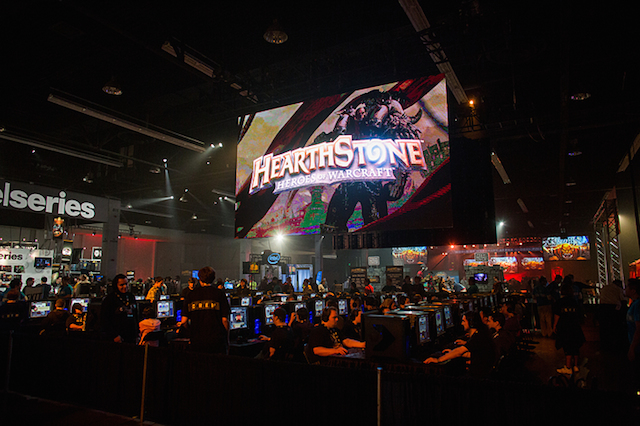
Most mobile F2P games steer clear of including too much skill. Skill makes games more difficult to balance, as players will have a varied experience of the same content. Furthermore, with highly skilled games it is difficult to give players a continuous sense of progression, as their skill level will typically plateau after an initial learning period. As most mobile F2P games are selling progress, they need to maintain the sense of progression that grind based games give, as ensure that players have broadly the same experience by leveling the playing field with luck.
In contrast, Hearthstone has a high degree of skill – the game has an impressive number of tournaments and events, and Blizzard host a World Championship at BlizzCon that had a prize pool of $250k last year. Youtube and Twitch are awash with Hearthstone matches and the top players are starting to make their fame and fortune from the game. This is clearly a far cry from games like Clash of Clans or Game of War, where success largely depends on the amount of time (and money) players can grind into the game.
That said, in Ranked play, working your way up gets more difficult the higher you go not only because you meet more skilled opponents. Any player will tell you that you need to both have the right cards to put together in a deck to create the right combos, as well as the ability to change your deck as you go. This flexibility is vital as the meta game changes as you move through the ranks. At a given time, rush decks might be unstoppable at ranks 20-15, but easy prey above rank 10.
Always having the right epic and legendary cards to finish off your deck becomes essential, but you rarely need very many of them to create a good deck. The pressure to spend is in having the necessary breadth of cards, rather than a deck construct solely of very rare cards. This creates a dynamic where players do need to spend to play at the highest levels, just as League of Legend players need to practice with all the different Heroes rather than just the ones that are freely available that week. At the same time each individual card is balanced for its mana cost and players who have spent a lot of money to acquire a lot of different cards might be beaten by a player who has spent very little, but happens to have the right cards for that particular battle. Players must spend to progress in general, but matches don’t feel pay to win.
Synchronous PvP
Hearthstone is one of the only successful mobile games to centre on its synchronous PvP experience. Vainglory and others have tried to take this challenge on, but no one else has succeeded except another game backed by a massive desktop IP: World of Tanks Blitz. Hearthstone was in beta on PC 9 months before coming to iPad, and had half a million downloads before it even hit the App Store. This period was essential to give them the critical mass needed to match players with each other at an appropriate level. Without it players would either be facing long wait times every match they played, or getting matched against players of very different skill – either case is a potentially game breaking experience.
Blizzard’s ability to drum up this level of interest in a new game is a testament to their expertise at launching new synchronous PvP games, but absolutely not a reference that other developers can hope to emulate. Without Blizzard’s existing World of Warcraft IP, installed fanbase, community management efforts and PR, the game would have faced a much harder prospect of building the community necessary for critical mass. I do not believe that we will see a synchronous PvP based game successful on mobile without a PC version any time soon.
Conclusion
The success of Hearthstone, combined with how different it is from many other mobile F2P games makes you expect it would have a huge impact on the prevailed design trends in the industry. The pacing system in particular seems superior to the energy systems that are still prevalent in many games. However, the fact that Hearthstone was launched PC first on the back of the huge World of Warcraft brand has allowed a number of other differences that the vast majority of mobile F2P developers cannot hope to emulate.










